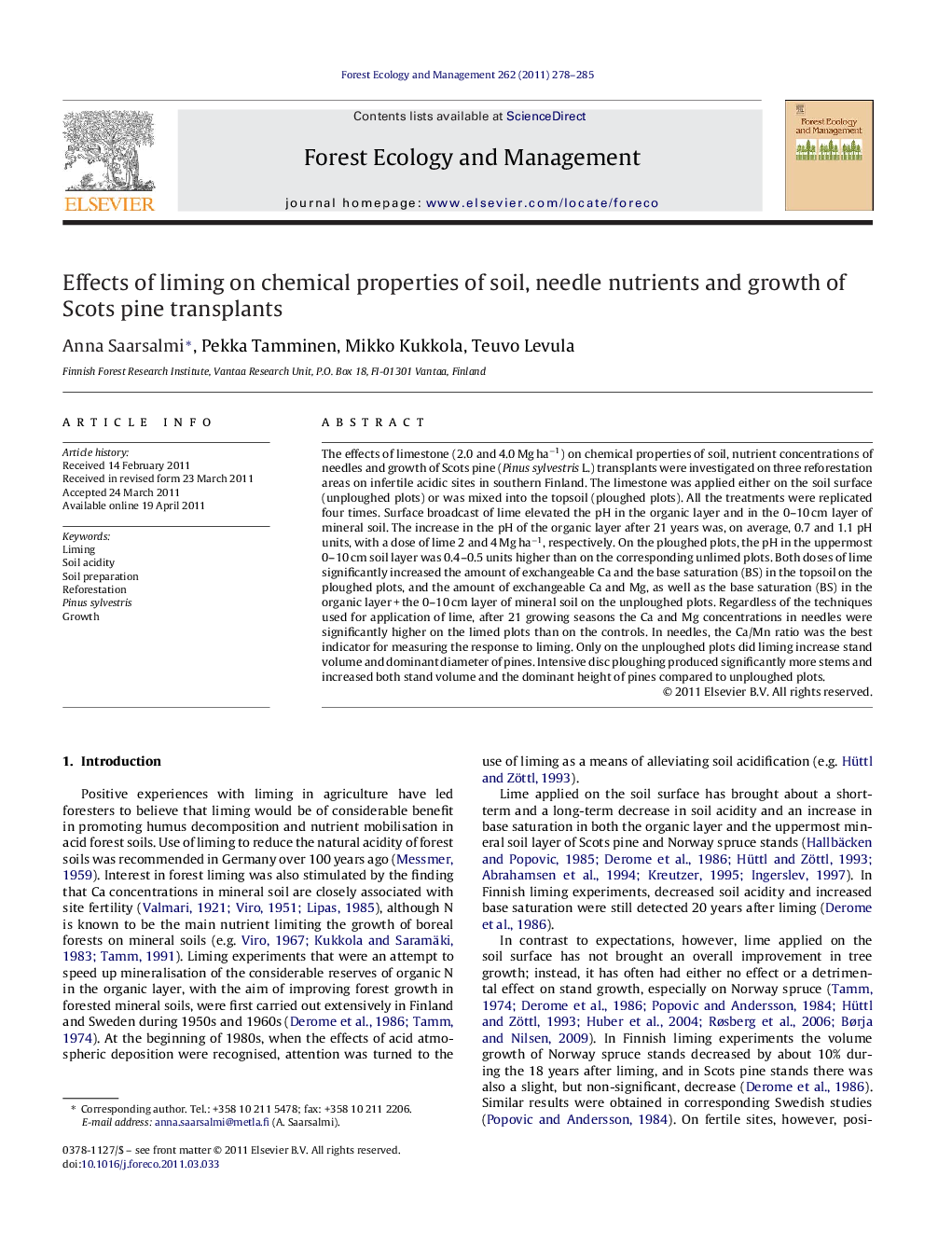| Article ID | Journal | Published Year | Pages | File Type |
|---|---|---|---|---|
| 87969 | Forest Ecology and Management | 2011 | 8 Pages |
The effects of limestone (2.0 and 4.0 Mg ha−1) on chemical properties of soil, nutrient concentrations of needles and growth of Scots pine (Pinus sylvestris L.) transplants were investigated on three reforestation areas on infertile acidic sites in southern Finland. The limestone was applied either on the soil surface (unploughed plots) or was mixed into the topsoil (ploughed plots). All the treatments were replicated four times. Surface broadcast of lime elevated the pH in the organic layer and in the 0–10 cm layer of mineral soil. The increase in the pH of the organic layer after 21 years was, on average, 0.7 and 1.1 pH units, with a dose of lime 2 and 4 Mg ha−1, respectively. On the ploughed plots, the pH in the uppermost 0–10 cm soil layer was 0.4–0.5 units higher than on the corresponding unlimed plots. Both doses of lime significantly increased the amount of exchangeable Ca and the base saturation (BS) in the topsoil on the ploughed plots, and the amount of exchangeable Ca and Mg, as well as the base saturation (BS) in the organic layer + the 0–10 cm layer of mineral soil on the unploughed plots. Regardless of the techniques used for application of lime, after 21 growing seasons the Ca and Mg concentrations in needles were significantly higher on the limed plots than on the controls. In needles, the Ca/Mn ratio was the best indicator for measuring the response to liming. Only on the unploughed plots did liming increase stand volume and dominant diameter of pines. Intensive disc ploughing produced significantly more stems and increased both stand volume and the dominant height of pines compared to unploughed plots.
► Effects of liming on soil and Scots pines were followed for 21 years. ► The experiments were established on three reforestation areas. ► Liming (2 and 4 Mg ha−1) increased soil exchangeable Ca and Mg linearly. ► Surface liming increased stand growth, but limestone mixed in the topsoil had no effect. ► Ca/Mn ratio in needles was the best indicator for measuring the response to liming.
